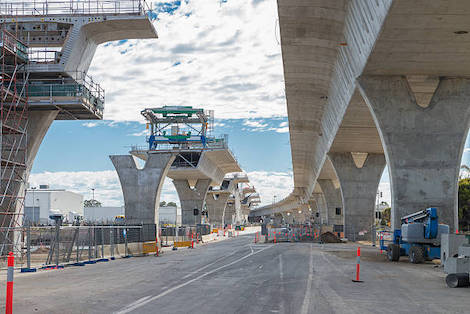2021 was a big year for American infrastructure and after months of wrangling, Congress passed a massive $1 trillion Biden infrastructure bill. Now, with everything signed off, businesses and government organizations across the board are keeping their eyes peeled as the rubber meets the road and spending begins to roll out in 2022. This certainly includes freight procurement teams at manufacturers, retailers, and distributors across the US.
This historic legislation will aim to provide massive facelifts across the nation’s infrastructure, with spending earmarked for everything from growing high-speed internet access to upgrading roads and bridges. And with many of these upgrades set to impact the supply chain in one way or the other, transportation insiders– like Sleek Technologies– are rightly paying close attention as projects unfold in the coming months. Here are a few things shippers should keep in mind in the short, medium, and long term.
Construction Means Delays
Construction is arguably the biggest term associated with any infrastructure bill. And fortunately in the short and medium-term that can only mean one thing: delays. Therefore, to cope with road disruptions, which can greatly impact on-time delivery (OTD), shippers will need to plan ahead by understanding if planned road construction will infiltrate routing guides. Shippers may also need to invest in advanced technology which will help forecast and adapt to real-time disruptions.
Tech Grid Investment Enables Efficiency
Investments in grid enhancements will enable shippers to adopt more sophisticated technology. This means that shippers who have been slow to adopt advanced freight procurement technologies could be left behind by companies that have a progressive approach to innovation. Thus, it is important for shippers to make continuous improvement a company priority so critical teams, like the transportation team, have the tools needed to uncover resilience opportunities.
(Hopeful) Labor Market Growth
The Biden administration has taken steps to help boost the truck driver workforce, however, growth has still been tough to come by – even though there is hope that these efforts will begin to bear fruit. That said, in the meantime, while the strained labor market continues to limit freight capacity, shippers can no longer rely on an antiquated, linear tender process. Forward-thinking shippers have already turned to technological advancements to automate how they source carriers so goods are delivered on time and at fair market prices.

